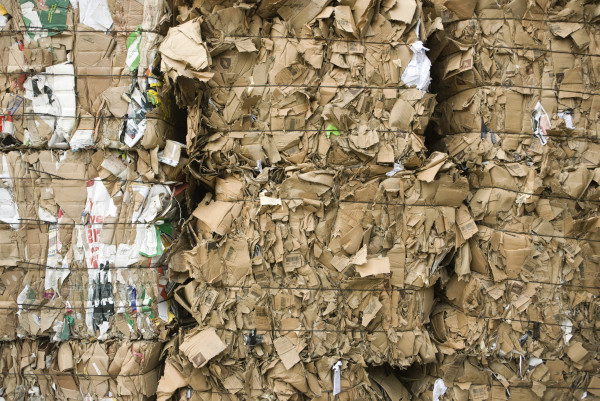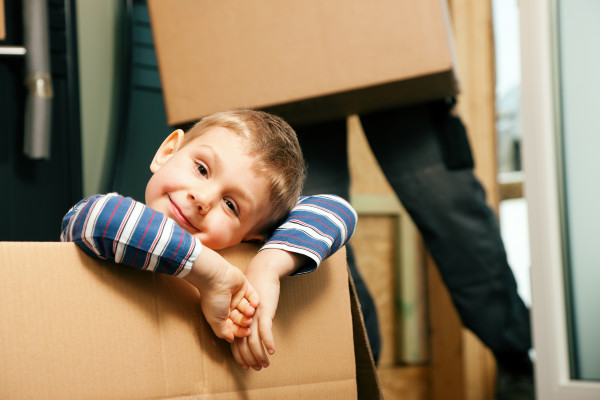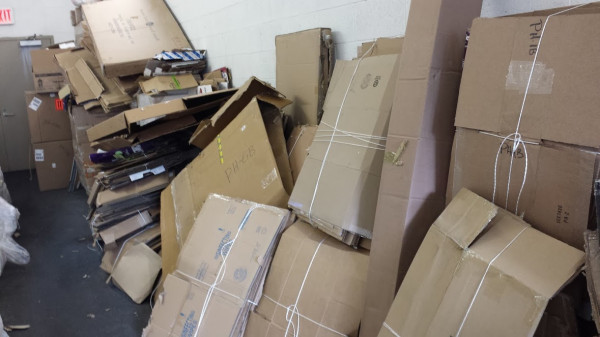The strong development of the e-commerce sector changes the urban environment and redraws the map of the logistics landscape. Vast distribution centers, urban distribution centers within the city limits, shops in the city center, and facility managers in residential buildings all have to deal with various volumes of discarded packaging material, mainly cardboard boxes, but waste can be turned into value with the proper sorting and compaction equipment installed.
Visions of the new logistics landscape
In a conceptual view of the new emerging logistics landscape, we see vast distribution centers built at strategic locations outside the city limits. Some are e-commerce warehouses, which ship products directly to consumers living in the countryside and in towns outside the cities, while other distribution centers supply the smaller urban distribution centers. These urban distribution centers are hubs located within the city limits to help restock the shelves of shops and convenience stores in the cities in a timely manner and to ensure fast deliveries to e-commerce customers in the city center and suburban residential areas.
Anticipatory logistics, where e-commerce retailers predict coming orders based on previous customer behavior data and store goods closer to the potential customer, is becoming increasingly important, as more and more consumers expect same-day delivery or at least delivery within 24 hours.
Many reports give rather futuristic visions of the last mile delivery of goods to the households by automated vehicles and drones and as an option to home delivery, we see local pick-up hubs, where the consumers collect their ordered items in the vicinity of their homes or where they do their regular grocery shopping.
The different locations on our conceptual map of the logistics landscape face one common challenge. They must deal with all the empty discarded packaging material in an effective and sustainable way!
Cardboard is an asset
Corrugated cardboard is widely used as packaging material and the demand is expected to continue to grow substantially the next couple of years. The global market for cardboard boxes was valued at 107.8 billion USD in 2017 and the market is predicted to expand at a CAGR of 4.3 % in the period 2018-20281
The popularity of cardboard boxes is not surprising. The material can easily be recycled, which is in line with initiatives from governments in many countries to recycle more paper packaging material to reduce the dependence on virgin fiber in the paper production. The use of recycled fiber requires less energy and resources and results in a significant cost advantage when producing new corrugated boxes.
Where cardboard boxes end up and what compaction equipment to recommend
Let us now take a closer look at the new urban environment and logistics landscape and ask; where do the empty cardboard boxes end up and what type of equipment is required to take care of this recyclable material in a profitable and sustainable way?
The highly or completely automated distribution centers and e-commerce warehouses receive big batch deliveries, store and repack goods in smaller batches or individual packages for further distribution. In large-scale repacking, the need to handle huge volumes of big boxes inevitable arises. When operations are automated, it comes natural to also invest in automated waste management solutions. Conveyor belts and chutes can transport the cardboard to horizontal balers placed outdoors. Horizontal balers have an impressive capacity to process huge volumes of corrugated cardboard through constant feeding. They automatically compact, cut and tie the packaging material into mill-size bales, which are ready to go back into the recycling loop.
The urban hubs work at the same way but still handle a lower volume of boxes in big but also more mixed sizes. Small horizontal balers can still be a feasible solution, but briquette presses (also known as briquetting machines) are another option that require less floor space. The briquette presses are installed indoors or outdoors, and the output can be automated through duct systems transporting the briquettes to containers. This equipment provides a high compaction ratio of up to 20:1 and the highly compacted dense briquettes have a recycling value.
Stores in the city need to dispose of outer packaging of the goods and inner packaging discarded in the store by the customers. Many stores also serve as pick-up locations for deliveries, where it is not uncommon to offer the consumer to discard of the box on site as part of the service. To master the stream of cardboard boxes, the store can preferably use a classic vertical baler, or for larger volumes, a briquette press. The smaller briquette presses do not take up much more space than the bigger vertical balers.
The goods finally arrive at their destination – the consumers’ homes – and that is also where the outer packaging, often cardboard boxes, end up. It is then the consumer’s responsibility to bring the cardboard to a recycling point or it can be an area where curbside collection of recyclables is offered, or the box could even be taken back to the distribution hub as part of the home delivery service. However, many consumers reside in apartments and a considerable volume of cardboard boxes may pile up in the waste storage of residential buildings. One way to handle it, is for the facility manager to install a small baler on site for effective volume reduction of the packaging waste.
Sorted and highly compacted corrugated cardboard in the form of bales or briquettes is easy and cost-effective to transport and it is a way to turn waste into value. The clean fraction forms a link in the recycling chain and can generate income, when delivered to a collector or directly to a paper mill.
If you want to know more about cardboard compaction and recycling, the experienced Orwak team worldwide is happy to guide you. Contact us!
1 Source: https://www.futuremarketinsights.com/reports/corrugated-boxes-mark






